
2024 Maruti Dzire Review: Playing It Safe
- Nov 12, 2024
- Views : 1747


I have been driving a Nissan Sunny for over five months now. While I wasn’t too kicked about being handed the keys to the Sunny as my long-term vehicle here at ZigWheels, it has proved itself time and time again and today I can state that this is a car of substance. The Sunny is an extremely practical offering that ticks all the right boxes on a car buyer’s check list, save for its bland looks. Despite that, the Sunny has been a popular car in other global markets and here in India too it is gaining momentum in the lower entry level sedan segment. Adding to its popularity is the fact that Nissan has managed to price it rather competitively and that pretty much sums it up as a formidable package that has a lot of potential in the Indian market.
Now, before you get confused and wonder why I am ranting and raving about the Sunny and not about the Scala, it’s common knowledge that Renault and Nissan are joined at the hip, and in lieu of that fact, the companies have been known to dwell in badge engineered products. After all, the same car with two different brands and a new name eventually converts into volumes for the company, and regardless of the individual company figures, they are dealing both hands and are poised for a win-win situation. Based on that, Renault has essentially reworked the Sunny with minor tweaks in order to make it a more upmarket product and target a slightly higher clientele than what the Sunny is pitched at, and have christened the new car as the Scala. The big question however is whether the difference between two is enough.
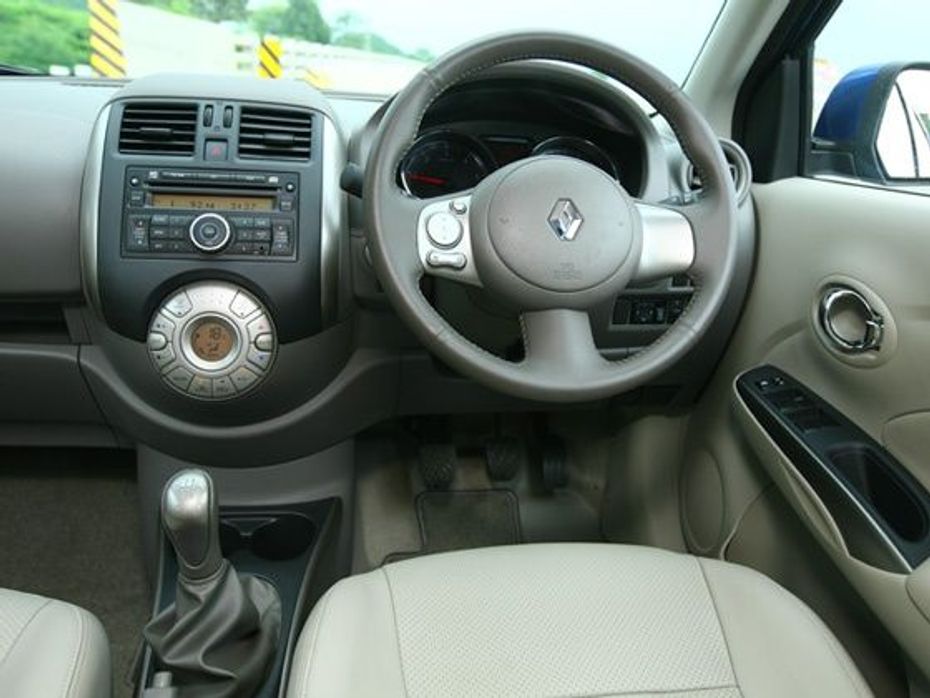
The Renault Scala shares everything with the Nissan Sunny (Nissan Sunny : First Drive), but to differentiate the two, Renault has reworked the car with what they like to refer to as a little French flair. The large headlights have a smoked look, the front bumper and grille have been revised and resemble that of the Pulse hatchback, the rear sports Skoda inspired tail lights and a neat chrome strip which actually does visually lighten up the back. The Scala also comes with alloy wheels as standard fitment, which does its part in enhancing the Scala’s exterior appeal. Overall the exterior treatment is rather basic and you really wish that Renault had done a bit more to make the Scala significantly different from the Sunny. However the changes do stand out enough to make the Scala the better looking car of the two, so at least Renault managed to achieve that aspect.
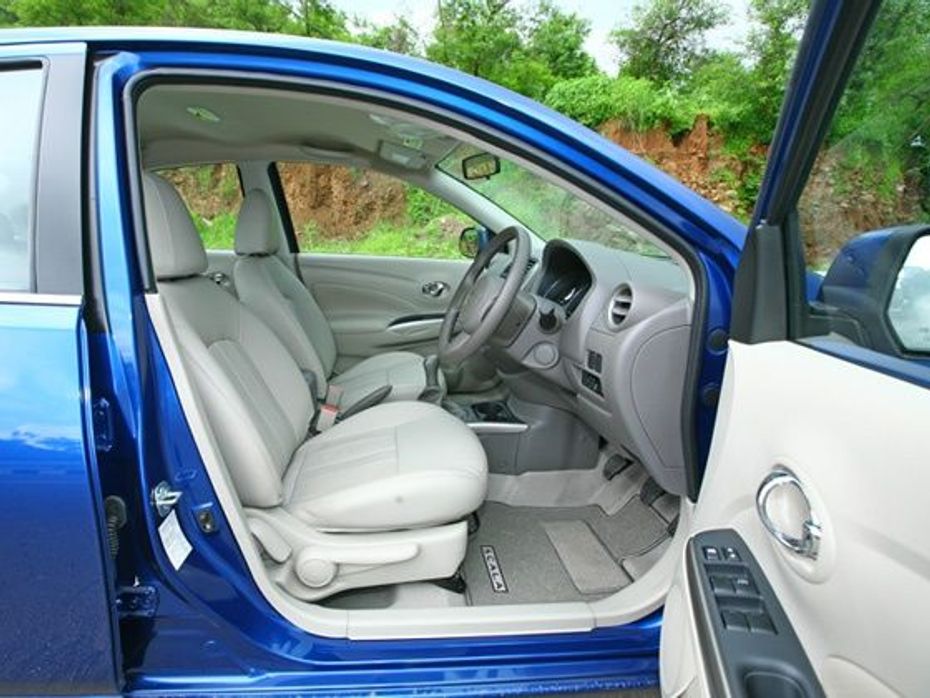
Open the door, get in the driver’s seat and you will feel as though you’ve jumped into a Nissan Sunny! It takes the Renault logo on the steering wheel to remind you that you are in fact in the Scala. Taking time to look around and notice the finer points and a few changes do make their presence felt, some subtle, some a little more noticeable. Having said that, I managed to only count two changes that were immediately visible, the first being the leather seats and the second a new gear knob.
Apart from that, there doesn’t seem to be a hair out of place between the two! The Scala, like the Sunny, is a sea of grey on the inside and while this has been accepted on the Sunny, which essentially is a value-for-money product, the slightly upscale Scala could do with a bit more flair. If Renault were trying for a more upmarket feel, the leather seats and a changed gear knob are definitely not enough. My personal opinion would be to install a whole new dashboard, or at least tweak the existing one and usher in some colour into the cabin. Visual enhancements go a long way in changing one’s perception of quality and Renault should have toyed with this idea a little more.

What is great about the Scala is the sheer amount of interior space; after all it is based on the Caaaar! The Scala offers you fantastic front leg room, and the best rear leg room in its class (I am sure it pips a number of higher end sedans as well), and more than ideal amount of trunk space. It’s a package that has been based on increased practicality and in that department the Scala doesn’t falter at all. In terms of equipment and kit, the Scala doesn’t offer anything new compared to the top model Nissan Sunny.

Again, this is an area that Renault could have capitalised on. The stereo, although nice, could have been of higher spec. It doesn’t even have a USB port. You do get steering mounted stereo controls, push button start/stop, climate control air-conditioning, central locking, keyless entry and on the safety front the car boasts front airbags and ABS. If the Scala is to take on customers a notch higher than the Sunny, this list could have included a rear parking sensor, rear armrest audio controls and as mentioned earlier a higher spec audio system.
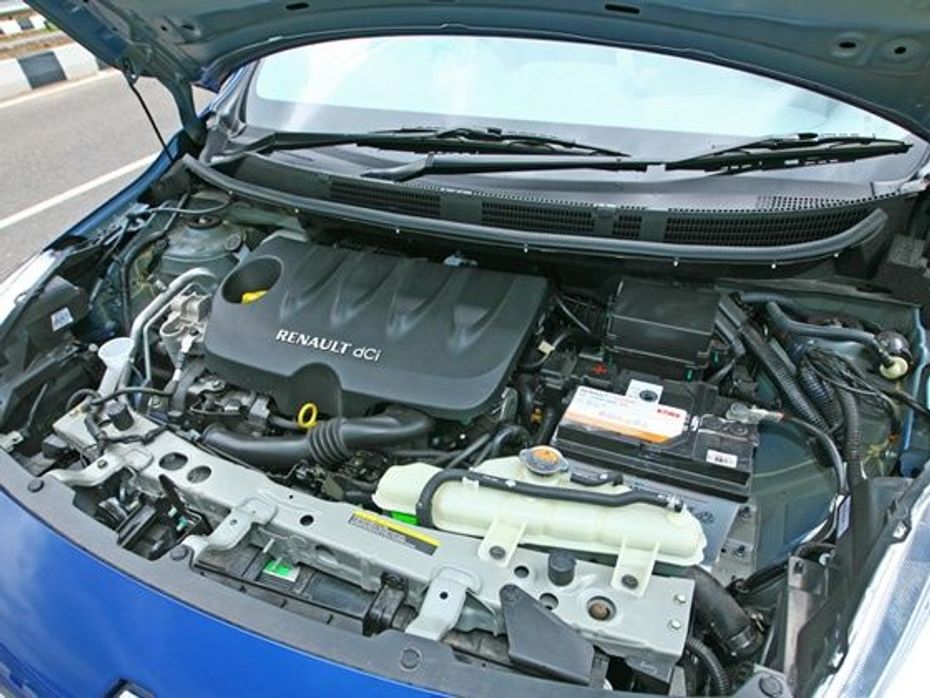
Powering the Scala is a choice of two engines, namely a 1.5-litre petrol and 1.5-litre diesel. The 1498cc petrol unit is capable of generating 99PS @ 6000rpm and a decent 134Nm of torque @ 4000rpm. The 1461cc diesel unit manages to make 86PS @ 3750rpm and 200Nm of torque @ 2000rpm. Both engines are mated to a 5-speed manual, however those who opt for a petrol Scala can go in for the CVT automatic version which Renault is expected to introduce in the near future. According to ARAI, the petrol Scala is capable of delivering 16.95kmpl and the diesel offers a stonking 21.64kmpl.
Now if you are wondering why you’ve heard all these figures before, guess what? There are the exact same engines in the Sunny! Mechanically both cars are twins, and as expected performance and road mannerisms are exactly the same. Power comes down smoothly and the car accelerates decently well from standstill but more important is the fact that it is extremely driveable. I had no trouble cruising along an expressway although tackling the mountains on my way to Shimla did require an added element of frequent gear changes. Speaking of which, the gear shift itself felt slightly tacky and vague. In terms of engine choice, my allegiance lies with the diesel unit, that I found a little more fun to drive and its refinement is unquestionable.
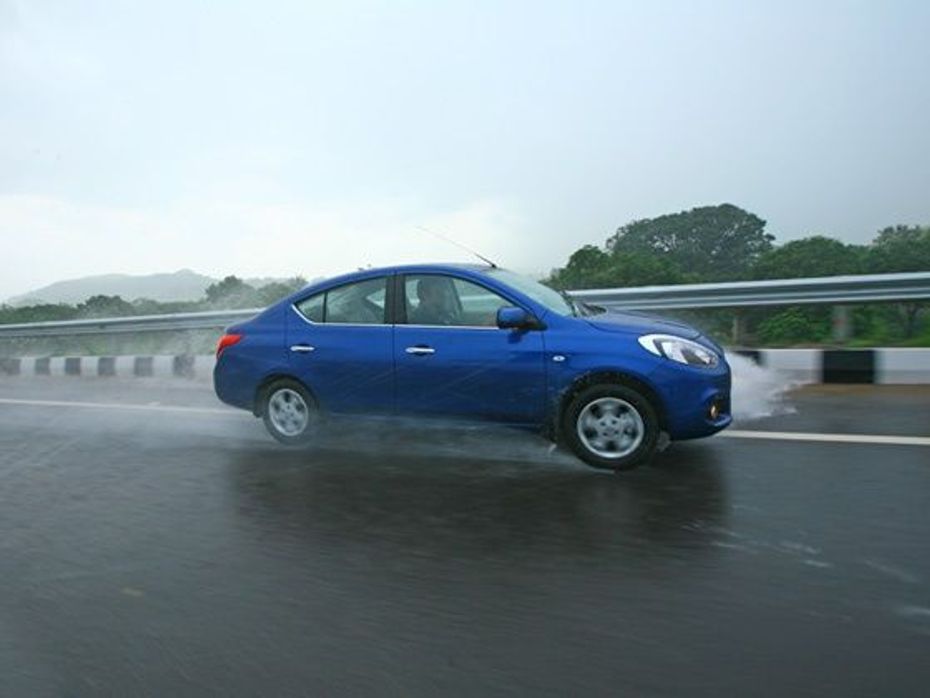
As stated earlier, the Scala is mechanically identical to the Sunny, and there is no difference in ride quality, handling or drive dynamics. Before you doubt the Scala, let me tell you that it’s a good thing that there is no change. The car, despite its length, is surprisingly well mannered. The ride quality is great and it’s capable of soaking up bumps like nobody’s business. Take it up to highway speeds and it remains well planted and at no time does it feel nervous.
Even up the mountain, the Scala was able to stick to its line and the other aspect that shone through was the light steering which also proved to be a boon on the hills. The EPS unit firms up rather decently at high speeds as well, so you feel in control at all times. Overall, I wouldn’t say that the Scala is the most engaging car to drive; after all the Honda city still holds the title as being the ultimate driver’s car in that class, but in its overall package of space, comfort and decent drive dynamics, the Scala does have its merits.

Coming to the big question on whether the Scala is good enough, which is a topic open for debate, I personally feel that as a product it has a lot going for it. It’s spacious, reasonably good looking, frugal, decent to drive and is expected to be rather cost effective. Honestly, I like the car a lot, but the problem comes when you bring the Nissan Sunny into the equation. The market already has the Sunny so why do we need the Scala? According to Renault, the Scala is set to target the premium mid-size sedan segment, namely compete against the Volkswagen Vento, Skoda Rapid, Hyundai Verna and Honda City, while the Sunny is targeted to take on the Toyota Etios, Mahindra Verito and Swift Dzire. Renault has made it clear that there will be no low end model of the Scala. It will only have a mid and high end trim, but I feel that isn’t enough to differentiate it from the Sunny.
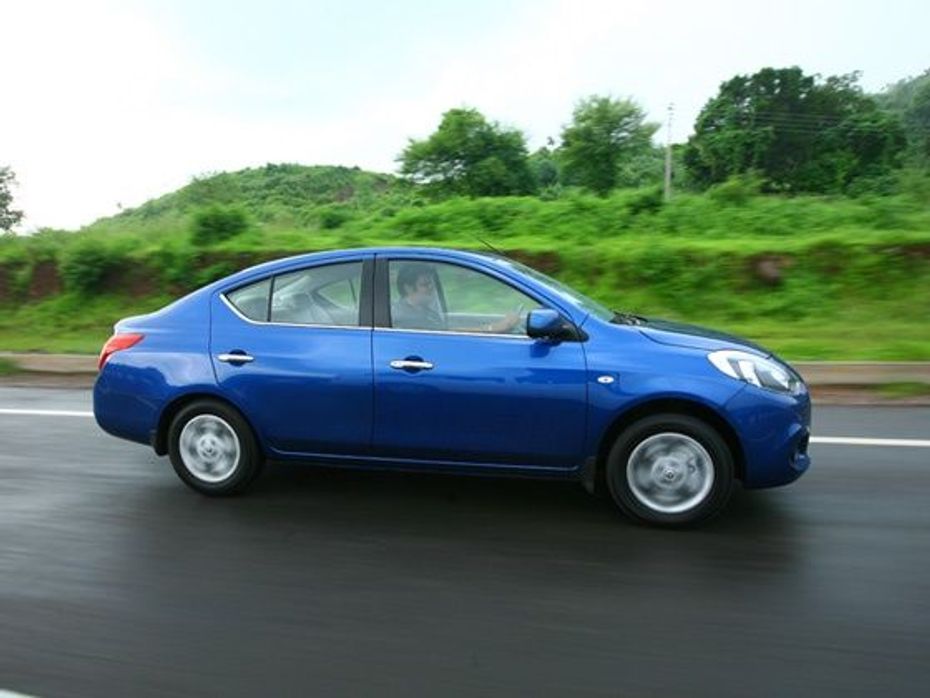
Essentially both are the same car and while badge engineering is smart business and the Renault-Nissan alliance has dabbled in this before with the Micra and Pulse, the ultimate decision lies in the hands of the customer and all it takes is to remove the badge and see the product underneath. Unless someone is absolutely keen on having a Renault badge on their car, they can get the Sunny for less and still have the exact same car. The Scala is a good product with lots of merit, but unfortunately it isn’t a different product and that is something that could plague its progress in the Indian market. I really wish Renault had done a little more to substantially differentiate the Scala from the Sunny.
Renault Scala Details
| Variant |
Displacement |
Power |
Torque |
Fuel Efficiency ** |
Price * |
| RxE |
1498 cc |
99PS @ 6000rpm |
134Nm @ 4000rpm |
16.95 km/l |
Rs 6.99 lakh |
| RxL |
1498 cc |
99PS @ 6000rpm |
134Nm @ 4000rpm |
16.95 km/l |
Rs 7.85 lakh |
| RxL Diesel |
1461 cc |
86PS @ 3750rpm |
200Nm @ 2000rpm |
21.65 km/l |
Rs 8.69 lakh |
| RxZ Diesel | 1461 cc |
86PS @ 3750rpm |
200Nm @ 2000rpm |
21.65 km/l |
Rs 9.57 lakh |
* Prices ex-showroom Delhi
** ARAI Claimed

2024 Maruti Dzire Review: Playing It Safe

2024 Honda Amaze Review: Predictable Is Good

Tata Tigor EV vs i-CNG: Which Is Frugal Yet Fun?
 Maruti Dzire
Maruti Dzire
 Honda Amaze
Honda Amaze
 Hyundai Aura
Hyundai Aura
 Tata Tigor
Tata Tigor
 Maruti Ciaz
Maruti Ciaz
India's largest automotive community
 Here Is A List Of SUVs Coming To The Indian Market In 2025
Here Is A List Of SUVs Coming To The Indian Market In 2025
 Check Out The List Of The Top 5 SUVs Showcased At The Auto Expo 2025
Check Out The List Of The Top 5 SUVs Showcased At The Auto Expo 2025
 Auto Expo 2025: Toyota Hilux Black Edition Explained In 10 Images
Auto Expo 2025: Toyota Hilux Black Edition Explained In 10 Images
 India’s Most Affordable Car, The Vayve Eva Is Priced From Rs 3.25 Lakh! Here Is A Look At All Of Its Variants!
India’s Most Affordable Car, The Vayve Eva Is Priced From Rs 3.25 Lakh! Here Is A Look At All Of Its Variants!
 Renault KWID
Rs. 4.69 Lakh
Renault KWID
Rs. 4.69 Lakh
 Renault Triber
Rs. 5.99 Lakh
Renault Triber
Rs. 5.99 Lakh
 Renault Kiger
Rs. 5.99 Lakh
Renault Kiger
Rs. 5.99 Lakh
 Maruti Dzire
Rs. 6.79 Lakh
Maruti Dzire
Rs. 6.79 Lakh
 Hyundai Verna
Rs. 11.07 Lakh
Hyundai Verna
Rs. 11.07 Lakh
 Toyota Camry
Rs. 48.00 Lakh
Toyota Camry
Rs. 48.00 Lakh
 Honda Amaze
Rs. 7.99 Lakh
Honda Amaze
Rs. 7.99 Lakh
 Hyundai Aura
Rs. 6.54 Lakh
Hyundai Aura
Rs. 6.54 Lakh